
Key Takeways
- Brand management is a long-term strategic process focused on shaping, maintaining, and evolving a brand's identity and consistency.
- Marketing is more tactical and short- to mid-term, aimed at promoting the brand, generating leads, and driving sales.
- Marketing teams focus on customer acquisition, conversions, ROI, campaign performance, and engagement.
- Brand managers focus on consistency, brand equity, perception, trust, and internal alignment.
- Marketing brings the brand to life externally through campaigns.
- Brand managers ensure that all internal and external touchpoints reflect the brand’s values and tone.
- Use marketing tactics (demand generation) when launching products or pushing for short-term growth.
- Successful organizations create workflows that connect brand and marketing teams closely.
- Use shared tools like DAM systems (e.g., Brandlife) and internal communication platforms to maintain consistency and real-time collaboration.
Marketing and brand management are two essential but distinct business functions that drive organizational success. Marketing focuses on promoting products and services to generate immediate sales and customer engagement, while brand management builds and maintains the long-term identity, perception, and reputation of a company. Though they serve different purposes-marketing being more tactical and brand management more strategic-they must work in harmony to create a cohesive customer experience that drives both short-term results and long-term brand equity.
How do marketing and brand management differ? What role does each play in business growth? And most importantly, how can they work together to build a successful brand? This article clarifies these questions by highlighting the key differences between these disciplines and demonstrating their collaborative potential.
What is Brand Management?
Brand management is the strategic process of shaping, guiding, and protecting how a company is perceived across every interaction. It goes far beyond visual elements like logos or colors. Effective brand management defines the core identity of a business and ensures that identity remains consistent, trustworthy, and memorable wherever the brand appears.
At its core, brand management establishes the brand’s purpose, values, voice, and personality. It ensures that every message, asset, campaign, and customer experience aligns with these foundational elements. Whether someone encounters your brand on your website, in a sales conversation, through social media, or inside your organization, they should experience the same recognizable identity and feel the same promise.
Strong brand management:
- Creates a clear and cohesive brand identity that people instantly recognize
- Builds trust through consistent messaging, design, and tone
- Aligns internal teams around shared values and strategic direction
- Supports long term loyalty, differentiation, and brand equity
- Ensures that brand assets, from visuals to messaging, are used correctly and consistently
In today’s multi channel environment, managing a brand manually is nearly impossible. This is why companies use platforms like BrandLife to centralize digital assets, maintain brand standards, streamline approvals, and ensure that every team and partner communicates the brand accurately.
Brand management is not just a creative function. It is a strategic discipline that shapes reputation, influences customer expectations, and lays the foundation for every marketing and sales effort that follows. When done well, it creates a brand that is not only seen, but believed in.
What is Marketing?
For ad agencies, commercial real estate, architecture firms, creative agencies, franchises, and nonprofits, marketing is not only about promoting a product but also building meaningful relationships with customers, leveraging creative assets, and enhancing brand value.
Here’s a brief breakdown tailored to each industry:
- Ad Agencies: Marketing is about crafting compelling narratives and leveraging media channels to create persuasive campaigns that resonate with diverse audiences.
- Commercial Real Estate: Focuses on promoting property listings, driving leads for buyers and tenants, and establishing a brand as a trusted authority in the market.
- Architecture Firms: Centers on showcasing design expertise, building brand credibility, and using visual storytelling to attract clients for architectural services.
- Creative Agencies: Emphasizes creating innovative, tailored marketing solutions for clients that elevate their brand identity and market positioning.
- Franchises: Marketing ensures consistency across locations, engages local markets, and promotes the brand’s value to attract potential franchisees and customers.
- Nonprofits: Marketing helps raise awareness, drive donations, and engage with supporters by highlighting the organization’s mission, values, and impact.
For decision-makers like VPs of Marketing, Creative Directors, and Marketing Operations Managers, marketing involves combining creative strategies with data-driven insights to align business objectives with customer engagement, ensuring brand growth and long-term success.
Key Differences Between Marketing And Brand Management
While marketing and brand management work hand in hand, their focus areas and goals are fundamentally different. Let’s explore the main differences:
Timeframe: tactical vs. strategic
Marketing typically focuses on short- to medium-term objectives. For example, launching a seasonal campaign, driving traffic during a product sale, or responding quickly to market trends.
These are all tactical efforts aimed at achieving measurable results in a defined time frame, often within weeks or months.
Brand management, in contrast, plays the long game. It’s about building and maintaining the brand’s reputation and identity over time, often years.
Brand managers think beyond the next campaign. They ask: How will customers view our brand five years from now? What lasting values should we represent?
Goals: sales vs. loyalty
The primary objective of marketing is to drive conversions and generate revenue. Marketing teams are often measured on lead generation, click-through rates, and sales figures.
Brand management is focused on building emotional connections and customer loyalty. A well-managed brand can command higher prices, attract repeat business, and stand out in a saturated market.
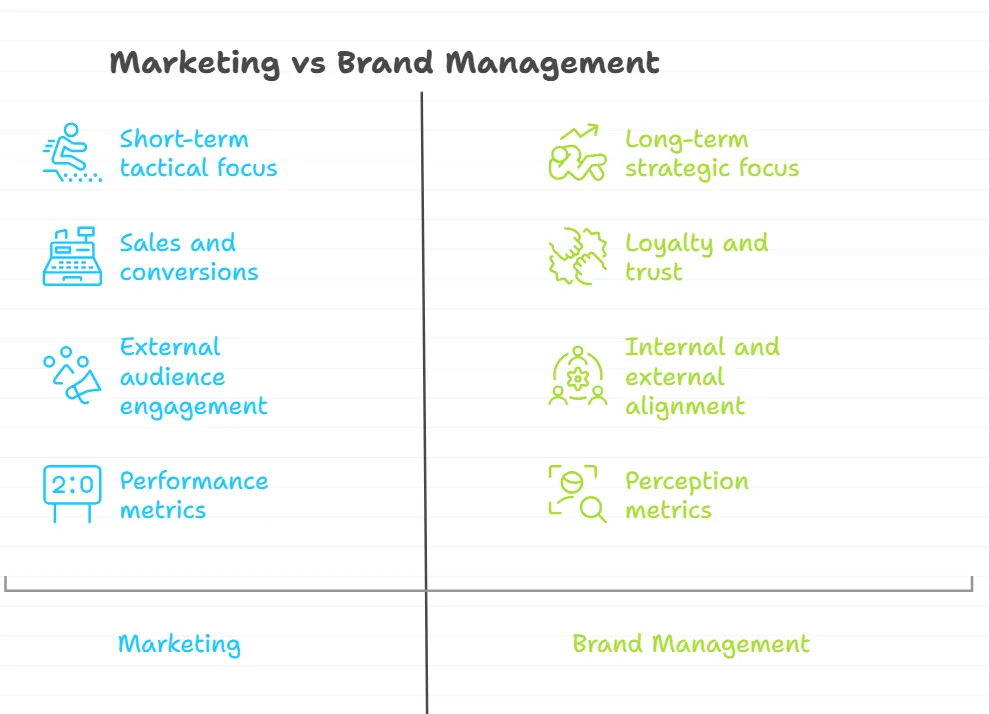
Audience: external vs. internal
Marketers primarily target external audiences, including potential customers, business partners, and the general public. Their goal is to attract, engage, and convert these audiences through tailored messaging and campaigns.
Brand managers, however, focus on both internal and external audiences. Internally, they play a key role in managing brands and marketing communications by making sure that every team, from sales to customer service, understands the brand’s values and communicates them consistently.
Externally, they uphold the brand’s identity across all customer touchpoints, ensuring that the brand experience remains cohesive and recognizable.
Metrics: performance vs. perception
Marketing metrics are highly quantitative: ROI, cost per acquisition, engagement rates, and conversions.
Brand management success is measured more qualitatively: brand awareness, sentiment, consistency, and trust. Though harder to quantify, these metrics are crucial for long-term business growth.
Key Benefits of Brand Management
Effective brand management delivers substantial advantages that directly impact both marketing effectiveness and overall business performance:
- Brand Equity Building: Strong brand management creates financial value beyond physical assets. Companies with high brand equity command premium pricing and enjoy higher market valuations, as customers perceive inherent value in the brand itself.
- Consistency Across Touchpoints: Brand management ensures customers receive the same experience whether they're visiting your website, speaking with sales, or using your product. This consistency builds trust and reduces cognitive dissonance.
- Competitive Differentiation: In crowded markets where products have similar features, brand management creates meaningful differentiation based on emotional connections, values alignment, and unique positioning that competitors can't easily replicate.
- Customer Loyalty Development: Well-managed brands foster emotional connections that transcend individual transactions. Customers develop relationships with brands they trust, leading to repeat purchases, higher lifetime value, and brand advocacy.
- Trust Establishment: Consistent brand experiences build credibility and reliability. When customers know what to expect from your brand, they're more likely to trust your new offerings and forgive occasional missteps.
- Premium Pricing Power: Strong brands command price premiums of 20-25% over generic alternatives. Brand management creates perceived value that justifies higher prices without corresponding increases in production costs.
- Internal Alignment: Brand management creates a shared vision that aligns employees around common values and purpose. This improves collaboration between departments and strengthens organizational culture.
- Crisis Resilience: Well-established brands recover more quickly from setbacks. The goodwill and trust accumulated through consistent brand management provides a buffer during challenging times.
When implemented effectively, brand management transforms marketing from a cost center into a strategic asset that delivers measurable returns on investment.
Key Benefits of Marketing
Effective marketing delivers measurable outcomes that drive immediate business growth while strengthening the overall customer journey. While brand management builds long term equity, marketing activates that equity in the market, generating awareness, demand, and revenue. Here are the core benefits of marketing for agencies, franchises, nonprofits, and creative teams.
1. Accelerated Demand Generation
Marketing campaigns rapidly generate interest and attract potential customers by placing your message in front of qualified audiences. Through targeted ads, content marketing, and social campaigns, businesses can quickly increase visibility and drive traffic to key touchpoints. This immediate influx of interest fuels lead generation and sales performance.
2. Improved Customer Acquisition Efficiency
Modern marketing is highly data driven, allowing teams to optimize campaigns for cost efficiency and conversion quality. Tools like CRM platforms, ad managers, and automation software help marketers track customer behavior, segment audiences, and personalize outreach. The result is a measurable reduction in acquisition costs and a higher return on spend.
3. Enhanced Market Positioning
Marketing brings differentiation to life by clearly communicating what sets a business apart. Through messaging, creative assets, and channel strategy, marketing establishes strong competitive positioning that helps customers understand why a brand is the best choice. Clear positioning supports both sales and long term brand perception.
4. Scalable Revenue Growth
Marketing provides repeatable systems for acquiring customers and expanding reach. By testing channels, refining offers, and optimizing campaigns, organizations can scale revenue predictably. This scalability enables businesses to enter new markets, launch new products, and grow customer segments with confidence.
5. Audience Insights and Data Intelligence
Marketing generates valuable data about customer preferences, pain points, and behaviors. This intelligence helps businesses refine products, improve services, and align messaging with audience needs. Insights from marketing performance often guide larger business decisions around strategy, pricing, and product development.
6. Strengthened Customer Relationships
Good marketing does more than sell. It educates, inspires, and builds meaningful relationships with customers. Through email nurturing, social engagement, and personalized experiences, marketing helps foster ongoing loyalty that complements brand management initiatives and increases lifetime customer value.
7. Greater Agility in a Fast Changing Market
Marketing teams are often the first to respond to industry shifts, cultural trends, or competitive changes. Their ability to quickly adapt campaigns or messaging ensures that organizations remain relevant and visible. This agility allows businesses to maintain momentum even as market conditions evolve.
8. Support for Sales Enablement
Marketing equips sales teams with the right materials, messaging, and qualified leads to improve conversion rates. By aligning marketing content with each stage of the buyer journey, organizations create a smoother, more effective path from awareness to purchase. This alignment reduces friction and accelerates deal flow.
How Do Marketing And Brand Management Work Together?
Marketing and brand management may have distinct roles, but when aligned, they work together to create a unified and powerful brand presence. Marketing drives immediate results, while brand management focuses on long-term growth and loyalty.
By collaborating, these two functions ensure a consistent customer experience, strengthen brand identity, and ultimately drive business success.
1. Marketers bring the brand to life externally.
Marketers bring the brand to life externally by creating campaigns and experiences that resonate with the target audience. They use advertising, social media, and other channels to communicate the brand's message, values, and personality, making it tangible to consumers.

Consider how Nike runs its “Just Do It” campaigns. The slogan isn’t just a tagline—it represents athleticism, perseverance, and empowerment.
Since its launch in 1988, Nike has used this iconic slogan across a variety of advertising mediums, including commercials, print ads, and social media, to inspire and motivate consumers.
By featuring a wide range of athletes, from elite professionals to everyday people, and leveraging influencers and motivational storytelling, Nike effectively communicates its brand values of perseverance, empowerment, and athletic excellence.
These campaigns do more than just promote products; they evoke emotions and encourage people to push past their limits, fostering a deep emotional connection with the audience.
This consistency in messaging not only strengthens Nike’s brand identity but also reinforces its position as a leader in sportswear, aligning perfectly with its mission to inspire and elevate athletes of all levels.
2. Brand managers ensure internal consistency.
Brand managers ensure internal consistency by aligning all aspects of a company’s operations with the brand's core values, voice, and messaging. They work closely with various departments like marketing, sales, and customer service to ensure that every customer interaction is consistent and reflects the brand's identity.
This internal cohesion helps build trust and reinforces the brand's reputation across all touchpoints.

A great example of brand managers ensuring internal consistency can be seen in The Habitat for Humanity nonprofit organization. Brand managers at Habitat for Humanity work closely with various departments, including fundraising, marketing, and operations, to ensure that all communications and initiatives reflect the organization’s core values of building homes, communities, and hope.
Whether it’s the messaging in their campaigns, the tone used in donor outreach, or the imagery in promotional materials, Habitat for Humanity ensures that every interaction reinforces their mission and commitment to affordable housing. This internal consistency helps strengthen their message, drive support, and ensure that supporters can clearly identify with their cause.
3. Collaboration is essential for cohesive brand experiences.
Collaboration between different teams is essential for creating a cohesive brand experience that resonates with customers at every touchpoint. When marketing, design, product, and operations work together, it ensures that the brand’s message, visuals, and customer experience are aligned, building trust and loyalty.

An example of collaboration for cohesive brand experiences is Apple's product launches.
Apple’s marketing, design, engineering, and retail teams work closely together to create a seamless experience from product development to customer interaction. The marketing team ensures consistent messaging and excitement through advertisements, events, and social media.
The design team focuses on sleek, intuitive product aesthetics, while the retail team ensures a smooth in-store experience. This collaboration ensures that whether a customer buys online, in-store, or attends an event, they have a consistent, high-quality brand experience that aligns with Apple’s identity.
Comparative Table: Marketing vs. Brand Management
While marketing focuses on driving immediate sales and customer engagement, brand management is about maintaining a consistent and strategic brand identity over the long term.
For agencies working with clients across various industries, recognizing these distinctions helps in selecting tools that not only optimize short-term marketing campaigns but also ensure that the brand’s values, messaging, and identity remain consistent across all touchpoints.
This knowledge enables agencies to deliver more cohesive, impactful strategies that align with both immediate objectives and long-term brand growth.
Role Dynamics Within Organizations
The role dynamics between marketing and brand management are essential to creating a cohesive and successful brand strategy. Understanding how these functions collaborate and differ allows organizations to leverage both roles effectively, ensuring that short-term marketing goals align with long-term brand growth and consistency.
Here's a breakdown of how these roles work together within an organization.
1. Marketers are often the first owners of your brand.
Marketers are typically the initial owners of a brand, responsible for shaping its public image and communicating it to the market. They are the ones who define the brand’s voice, personality, and target audience, which serves as the foundation for future brand management efforts.
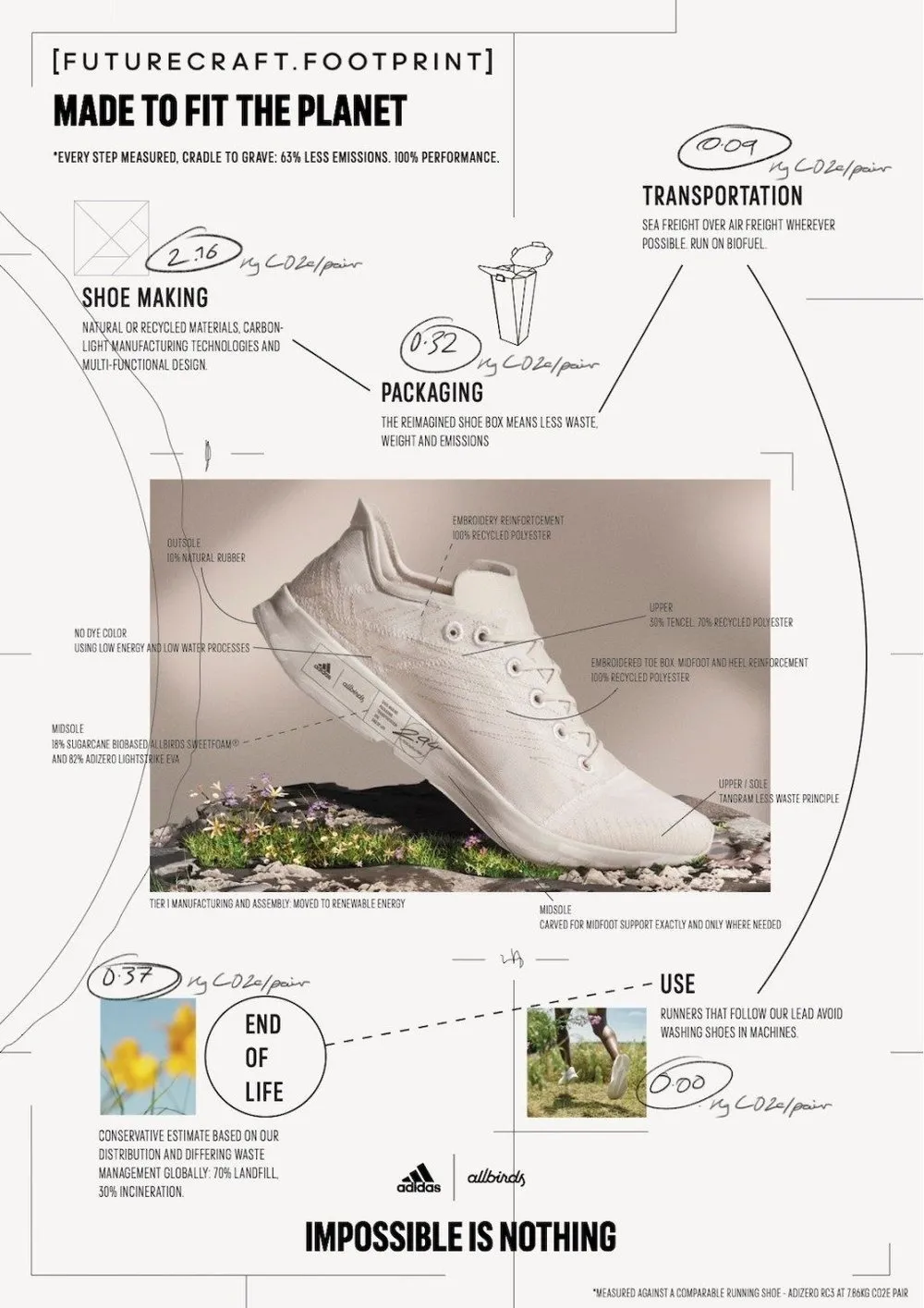
The marketing team of Allbirds used social media ads and influencer marketing to build initial buzz before a formal brand team was even in place. This helped define Allbirds as a “green alternative” in the footwear market.
2. Marketers create your brand, and brand managers refine it.
While marketers are the creators of a brand's identity, brand managers refine and maintain it over time. Marketers focus on launching and positioning the brand, while brand managers ensure consistency and coherence in its message.

Oatly entered markets with bold, disruptive marketing like “It’s like milk, but made for humans.” As the brand grew, brand managers ensured consistent messaging and design across regions and cultures.
3. Marketers promote externally, and brand managers promote internally.
Marketers focus on promoting the brand to external audiences, including customers, potential clients, and prospects. They leverage advertising, social media, and campaigns to build awareness. Meanwhile, brand managers promote the brand internally, ensuring that employees, leadership, and stakeholders understand and embody the brand’s values.

Canva’s marketers attract users with ads, tutorials, and digital campaigns. Meanwhile, brand managers ensure internal teams align with Canva’s creative and empowering brand values.
Brand managers as internal brand champions
Brand managers play a crucial role in maintaining a consistent and authentic brand identity across all internal and external touchpoints.
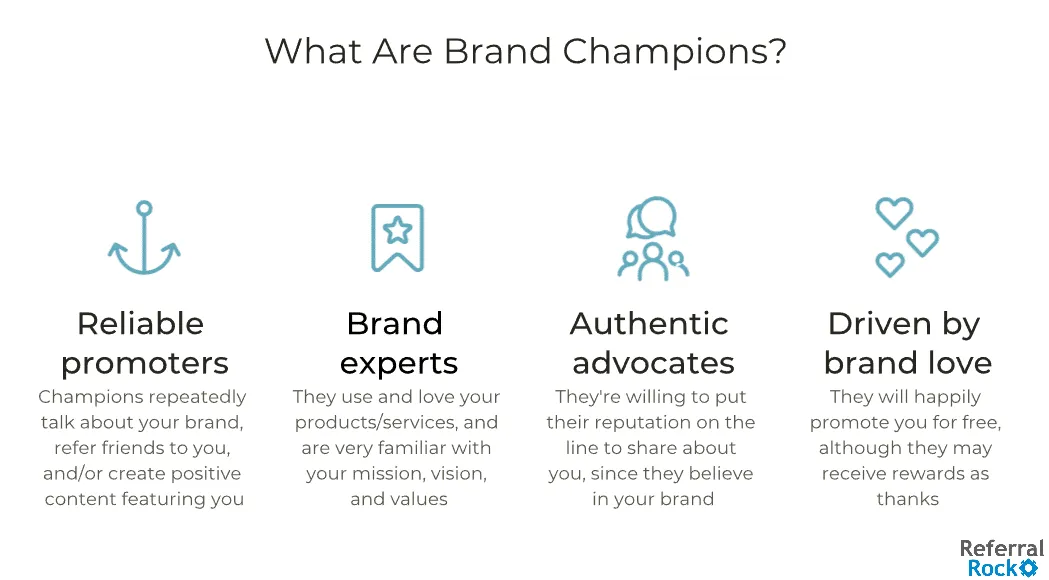
One of their primary responsibilities is acting as the internal brand champions of the organization. They ensure that everyone within the company—regardless of their department or role—understands, supports, and aligns with the brand's core values, mission, and vision. By doing so, brand managers create a unified and cohesive brand experience that resonates both inside and outside the organization.
Here's a detailed breakdown of how brand managers serve as internal brand champions:
1. Aligning Employees with the Brand Vision
Brand managers are responsible for ensuring that every employee, from the CEO to entry-level staff, understands the brand's purpose and mission. They ensure the entire workforce is aligned with the brand’s values and strategic goals. This is achieved through internal communications, brand workshops, and ongoing training.

For example, IDEO, a global design and innovation company, aligns its employees with its brand vision of "designing for impact." They actively engage their employees through design thinking workshops and team brainstorms, ensuring every project is centered around creating human-centered designs.
The company fosters a collaborative, creative culture that thrives on constant innovation and pushing boundaries, which is crucial in a creative agency. Their vision is deeply embedded in their day-to-day activities, from office design to client interaction.
Employees are not just following a design brief—they're part of a process that shapes the future of industries like healthcare, education, and consumer goods through innovative design.
2. Ensuring Consistent Messaging Across All Channels
Brand managers are guardians of the brand’s messaging, ensuring that it remains consistent across all platforms and interactions. This involves overseeing internal communications such as emails, newsletters, and meetings to ensure that the company’s values are always reflected.
At McDonald's, brand managers play a crucial role in ensuring consistent messaging across all channels. Whether it’s a global ad campaign, a local social media post, or an in-store experience, McDonald’s brand managers make sure that the brand’s core message—quality, affordability, and convenience—is communicated uniformly.

For instance, during their “I’m Lovin’ It” campaign, McDonald's brand managers ensured that the same upbeat, welcoming tone was reflected in television ads, online content, and even customer interactions in restaurants. This consistency in messaging helps strengthen the brand’s identity and fosters a seamless customer experience, no matter how or where consumers engage with the brand.
3. Building Brand Advocacy Among Employees
Brand managers help create brand ambassadors within the company by encouraging employees to live and breathe the brand. They inspire employees to advocate for the brand, both inside and outside of work. This internal advocacy helps foster a culture of brand loyalty that employees carry into their interactions with customers, partners, and even in their personal lives.

A great example is Zaha Hadid Architects, a renowned architectural firm, builds brand advocacy by ensuring that its employees are passionate about the firm’s innovative and bold design philosophy. The firm creates an environment where employees are given autonomy in design and ownership of projects.
Regular internal exhibitions, where employees showcase their designs, help foster a culture of pride in their work. Additionally, the firm organizes speaking engagements and workshops for employees to share their insights and perspectives on architecture.
Employees become vocal advocates of the firm’s design philosophy, proudly representing Zaha Hadid Architects at industry events and through various media channels.
4. Facilitating Cross-Departmental Collaboration
Brand managers work closely with other departments, including marketing, HR, product development, and customer service, to ensure that the brand’s values are reflected in all aspects of the organization.
For example, they collaborate with HR to ensure that the hiring process attracts employees who fit the brand culture, and with product teams to ensure that product development aligns with brand identity.

CBRE, a leading global real estate services firm, facilitates cross-departmental collaboration by organizing multi-disciplinary teams that include brokers, market researchers, asset managers, and legal experts. These teams work together to provide comprehensive solutions for clients, whether for commercial real estate deals or property management services.
CBRE hosts monthly cross-departmental meetings and uses shared platforms to ensure that everyone is up-to-date on project status and client needs.
The collaboration results in well-rounded, client-focused solutions that leverage expertise across the organization, leading to better decision-making and higher client satisfaction.
5. Leading by Example
As internal brand champions, brand managers lead by example, setting the tone for how employees should engage with the brand. They embody the brand’s values in their own behavior, demonstrating how to uphold brand standards in everyday interactions.
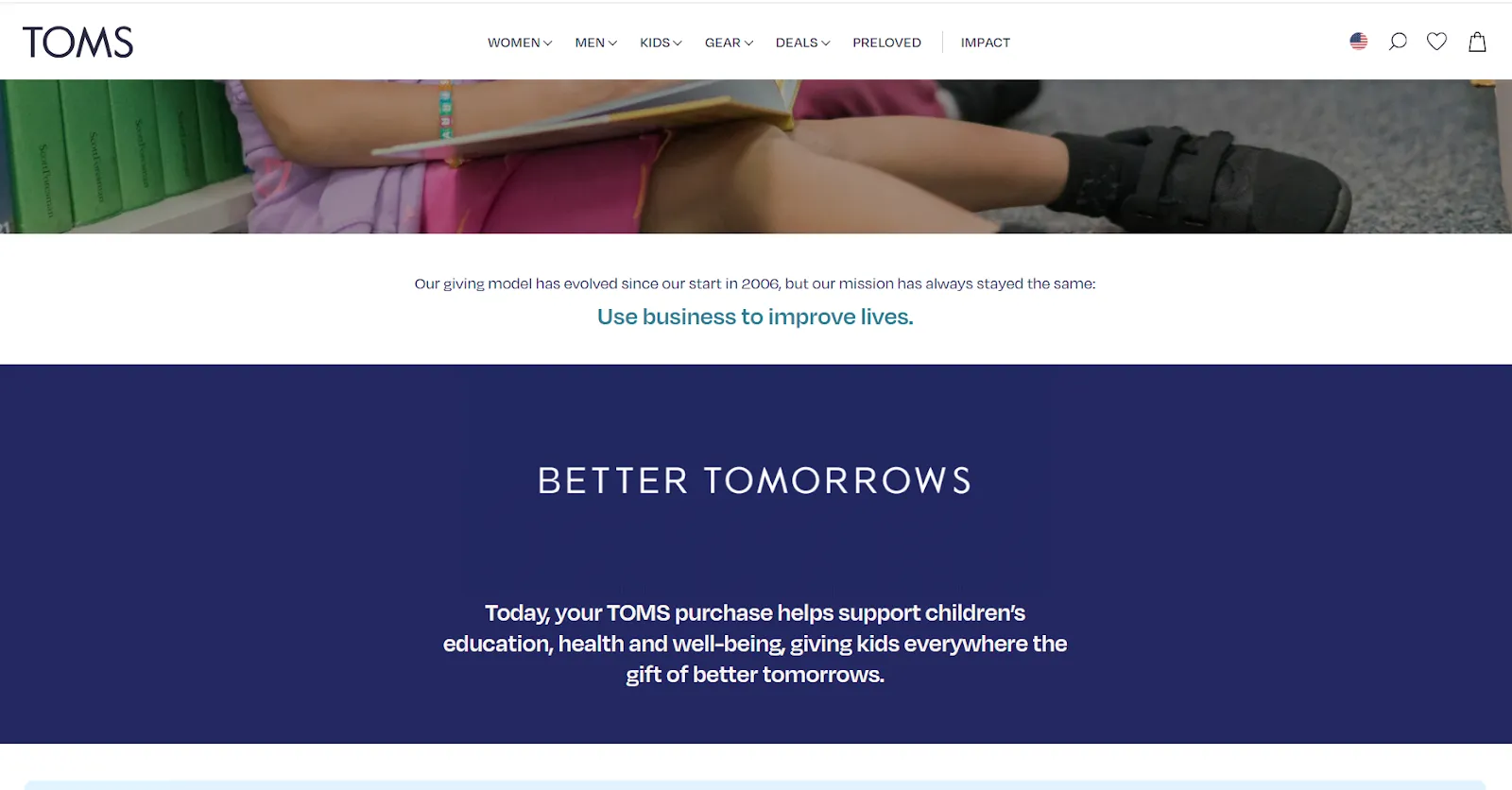
For example, Blake Mycoskie, the founder of TOMS Shoes, led by example by instilling the brand’s core value of social responsibility. TOMS’ famous “One for One” model, where each pair of shoes purchased funded a pair for someone in need, was a concept Blake personally championed.
He frequently engaged with employees, shared personal stories from his trips to developing countries, and worked directly with the marketing and operations teams to ensure the company's mission was consistently reflected in all brand interactions.
By leading with authenticity and personal involvement, Blake inspired his team to embrace the company’s social mission, fostering a culture of purpose-driven work that resonated deeply both internally and externally.
6. Championing the Brand’s Cultural Relevance
Brand managers ensure that the brand remains relevant and adaptive to internal changes and external trends, keeping it fresh and meaningful for both employees and customers. This involves staying ahead of cultural shifts and societal changes that may impact the brand.
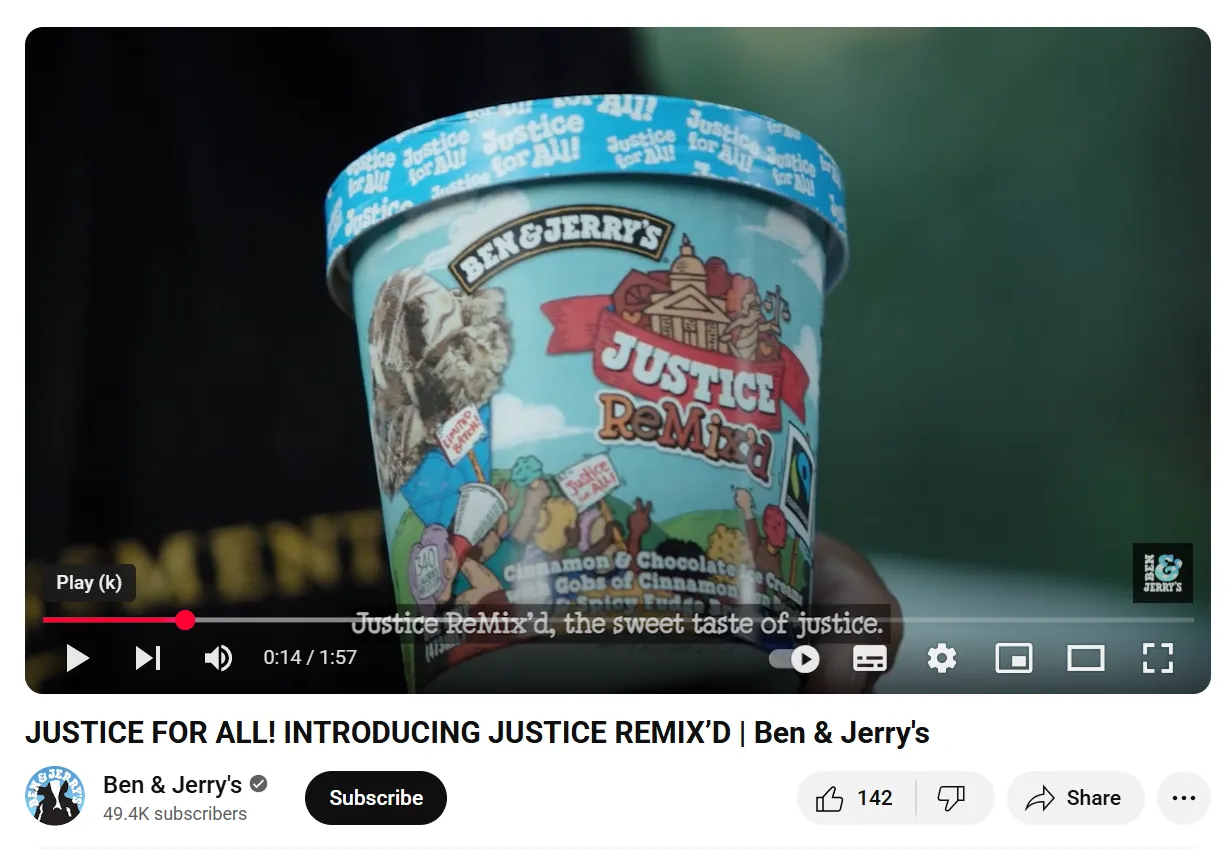
For instance, Ben & Jerry's has consistently championed cultural relevance through its active engagement in social and political issues that resonate with both their brand values and the communities they serve.
The ice cream brand has used its platform to advocate for causes like climate change, racial justice, LGBTQ+ rights, and criminal justice reform.
Notable examples include:
- "Justice ReMix'd" – Ben & Jerry's launched a special ice cream flavor to raise awareness about racial justice, with a portion of the proceeds supporting criminal justice reform.
- Climate Advocacy – The brand has long been vocal about the environmental impact of their production processes, and they’ve taken steps to reduce their carbon footprint and support clean energy initiatives.
- Partnership with Social Movements – Ben & Jerry’s regularly partners with activist organizations and participates in protests and campaigns, such as Black Lives Matter and Fairtrade movements.
Tools and Technologies for Effective Brand Management and Marketing
Effective brand management and marketing rely heavily on the right tools and technologies. These resources help streamline processes, enhance collaboration, and ensure consistent messaging across all channels.
Here is a list of essential tools that can elevate brand management efforts and boost marketing efficiency:
Marketing tools
Here are a few core tools used in day-to-day marketing:
Customer Relationship Management (CRM) Platforms
CRMs like HubSpot, Copper CRM, Klaviyo CRM, LionDesk, and BQE CORE help organize and manage all customer interactions in one place.
These platforms track leads, monitor sales pipelines, and provide valuable insights into customer behavior, making it easier to personalize communication and improve customer engagement.
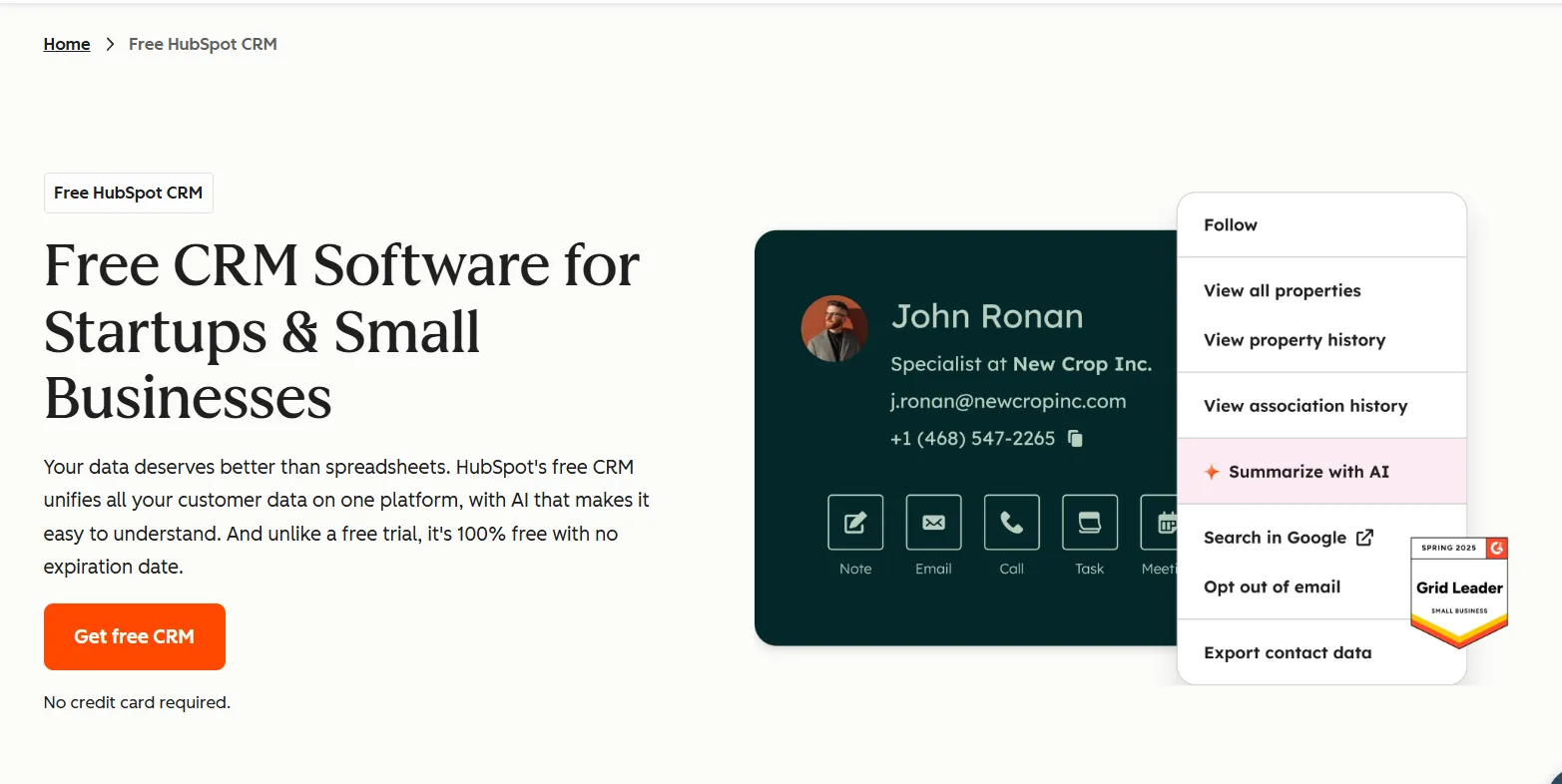
By keeping marketing and sales data aligned, CRMs play a critical role in building long-term customer relationships and increasing conversion rates.
Ad Platforms
Ad platforms like Meta Ads, Google Ads, LinkedIn Ads, and Google Local Services Ads allow marketers to run paid advertising campaigns across search engines, websites, and apps.

These platforms help businesses target specific audiences based on keywords, demographics, or behavior, ensuring that promotional content reaches the right people at the right time.
Marketing Automation Tools
Marketing automation platforms such as Mailchimp, HubSpot Marketing Hub, Marketo, and ActiveCampaign simplify repetitive tasks like sending emails, following up with leads, and managing customer journeys.
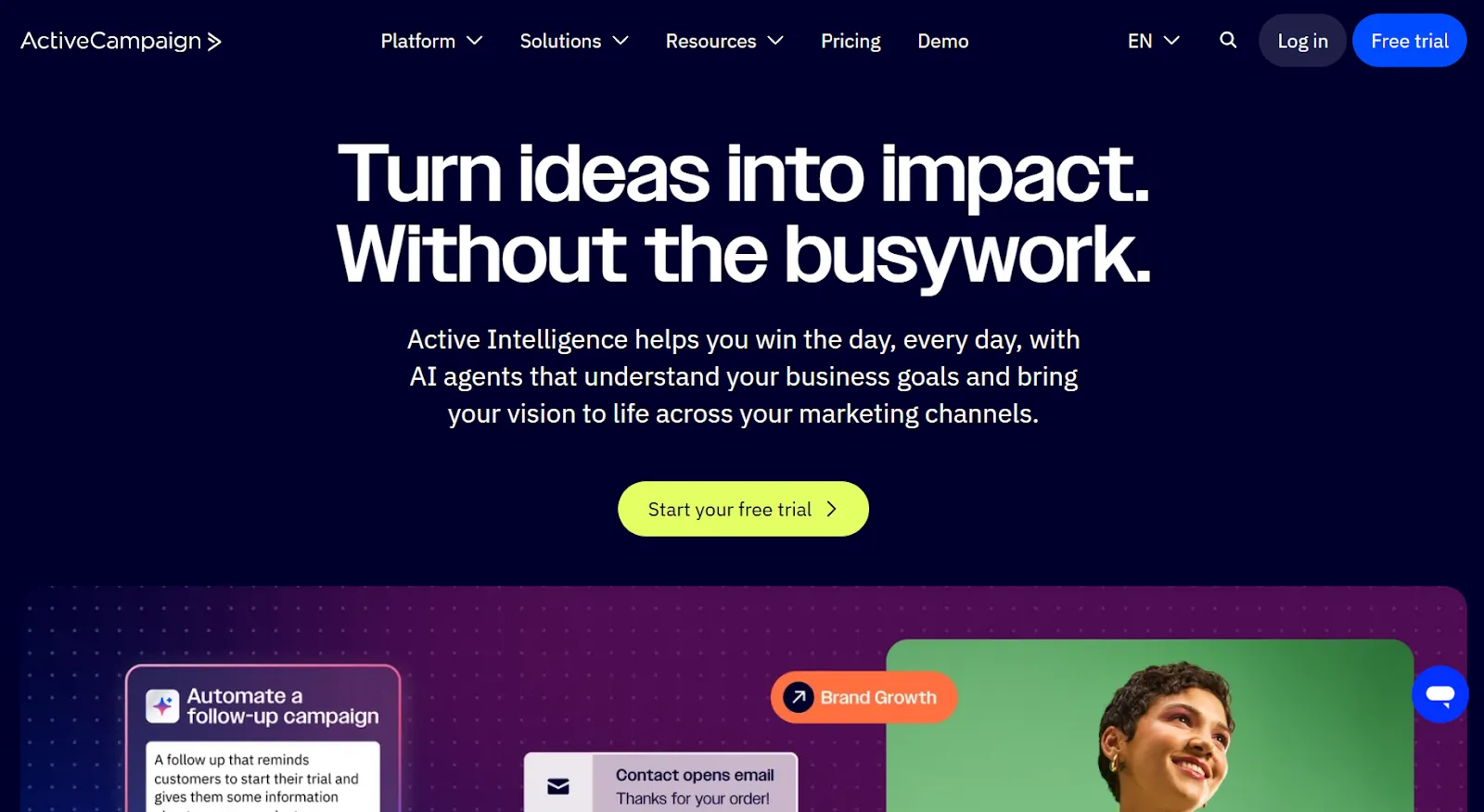
These platforms are built to save time by automating routine marketing activities — from nurturing new leads with tailored email sequences to segmenting customers based on behavior or interests. Instead of relying on manual effort, teams can set up automated campaigns that trigger at the right moments, ensuring prospects and customers always receive relevant, personalized messages.
By streamlining these repetitive yet vital processes, marketing automation platforms enable businesses to focus more on strategy, creativity, and growth, ultimately providing a seamless experience for their audience and better results for the company.
Brand management tools
Brand management tools play a pivotal role in ensuring consistency and efficiency across all marketing efforts, making it easier for businesses to build and maintain a strong brand identity.
These platforms centralize brand assets, streamline approvals, and enable seamless collaboration between teams, ensuring every piece of content — from ads to sales presentations — reflects the brand’s tone, style, and values.
Tools like BrandLife provide a centralized space where all these assets can be securely stored, organized, and easily accessed by your team. This ensures brand consistency and saves time across departments.
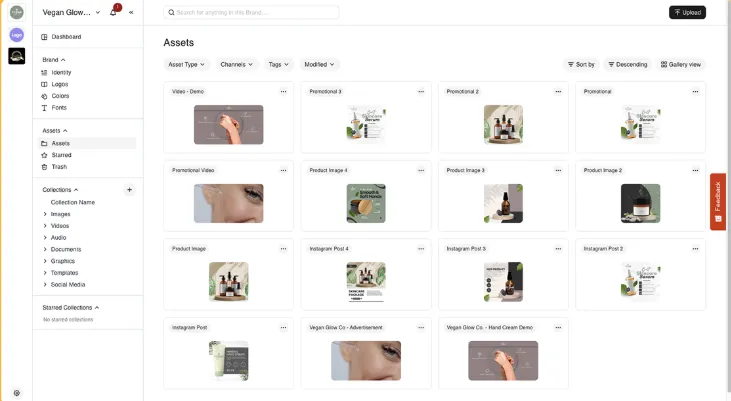
Some of the BrandLife’s notable features include:
- Centralized Digital Asset Storage Workspace: Offers a secure, unified hub for storing images, videos, documents, logos, fonts, social media assets, and more—making it easy for teams to locate and utilize the right files quickly
- AI-Powered Tagging & Advanced Search: Automatically tags assets and enables metadata-based, intuitive search—so you can instantly retrieve what you need without wasting time sifting through folders
- Version Control & Workflow Management: Maintains a clear history of edits to prevent using outdated assets, while automated workflows and approval pipelines streamline update and distribution processes
- Team Collaboration & Enhanced Communication: Built-in tools for commenting, sharing, and real-time collaboration ensure everyone stays aligned—from marketing and creative teams to external stakeholders
- Permissions-Based Access Controls: Granular permission settings let administrators define who can view, edit, download or share specific assets—ensuring security and compliance
- Branding Guideline Portal: A centralized hub for brand standards—logos, fonts, colors, templates—helps ensure consistency across all channels and touchpoints
- Integrations with External Tools: Seamlessly connects with platforms like Slack, Canva, Figma, Zoom, Zapier, Asana, Trello, Intercom, Gmail, and HubSpot—embedding your DAM into existing workflows
- Security & Compliance: Enterprise-grade infrastructure with strong security measures, encrypted storage, and adherence to data regulations—making BrandLife reliable for any organization
- Efficiency Metrics & ROI Insights: Analytics that highlight gains—like 30% more productivity, 25% faster project turnaround, and 40% cost savings on asset reuse—help teams quantify impact.
Apart from BrandLife, tools like Bynder and Frontify help teams organize and share brand guidelines, templates, and digital assets in a single, easy‑to‑access space, reducing miscommunication and errors.
Meanwhile, platforms such as Brandfolder and Marq enable marketing and design teams to customize and distribute materials quickly while preserving brand consistency.
Ready to Transform Your Marketing Brand Management Strategy?
The most successful organizations understand that marketing and brand management aren't competing functions-they're complementary forces that amplify each other's impact. When your brand management creates a strong foundation of consistent identity and positioning, your marketing efforts become more efficient and effective. Simultaneously, insights from marketing campaigns help refine your brand to better resonate with target audiences.
The challenge many teams face is maintaining alignment between these functions, especially as organizations grow and specialize. Without proper tools and workflows, brand inconsistency creeps in, marketing messages fragment, and the cumulative power of brand equity diminishes.
BrandLife's digital asset management platform solves this challenge by creating a centralized hub where brand guidelines, marketing assets, and team collaboration converge. Our solution ensures everyone-from brand managers to marketing specialists to external partners-works from the same brand foundation while maintaining the agility needed for effective marketing execution.
Start your free trial today and discover how the right platform can transform your marketing brand management from a point of friction to a source of competitive advantage.
Frequently Asked Questions
The main difference lies in their focus. Marketing is centered on driving short-term results—like boosting sales and increasing visibility—through campaigns and outreach.
Brand management, on the other hand, focuses on building long-term brand equity, consistency, and loyalty. Think of marketing as creating momentum and brand management as maintaining direction.
Marketing plays a crucial role in amplifying the brand that brand management helps shape. While brand managers define what the brand stands for, marketers communicate it to the public through campaigns, storytelling, and promotional strategies. Together, they ensure a unified and engaging brand experience.
Brand management builds trust and loyalty. A well-managed brand stands out in a crowded market, commands higher customer retention, and can even justify premium pricing. Without consistent brand management, marketing efforts risk being scattered or misaligned.






